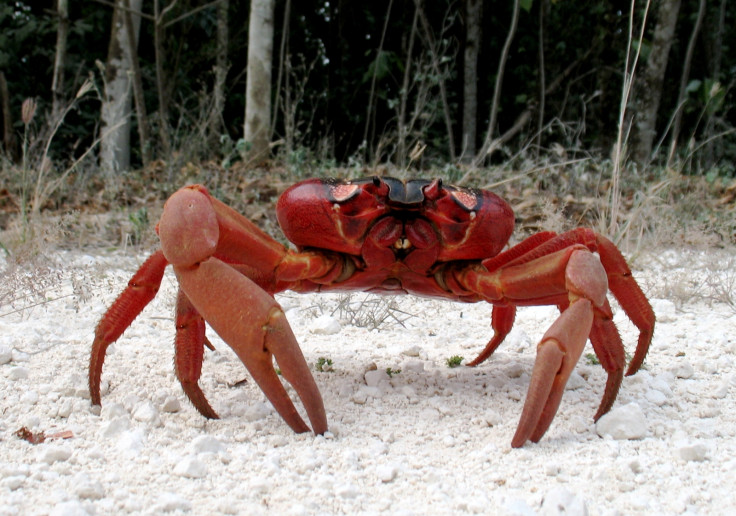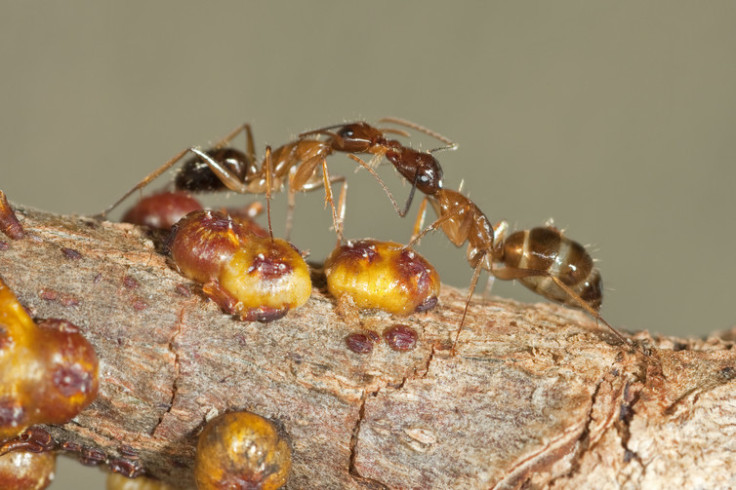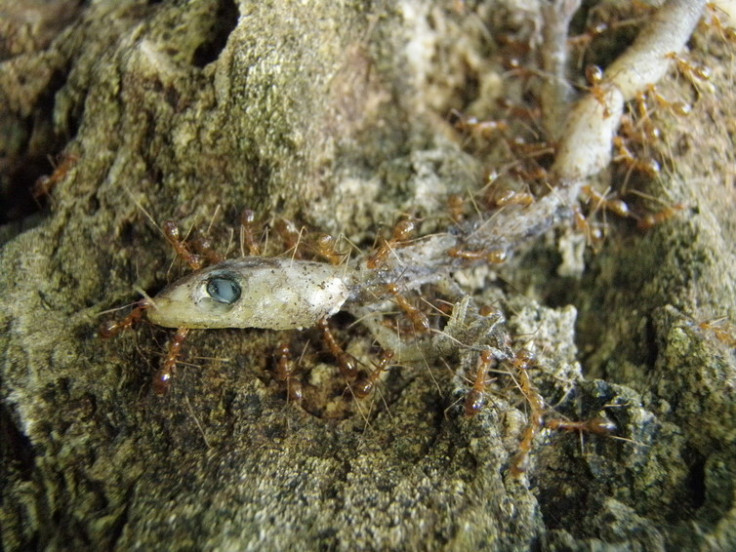A tiny wasp is going to kill all the yellow crazy ants to save Christmas Island's red crabs
Biological control has failed in the past, but conservationists believe the 2mm wasp will work.
Susan Lawler, La Trobe University and Peter Green, La Trobe University
Have you heard the one about the wasp that kills the bug that feeds the ants that kill the crabs that keep the forests healthy on Christmas Island?
If not, that's because it hasn't happened yet, but it is a tale worth telling.
In the coming weeks, Parks Australia will release a 2mm wasp on Christmas Island to control the island's yellow crazy ant infestation. Crazy ants are a major threat to the island's wildlife, including its famous red crabs.
Biological control – when we use one species to control another – is infamous for giving Australia its cane toad invasion. So, how do we know this one will work?
Christmas Island and its crabs
Christmas Island is a unique natural habitat with many endemic species. The national park covers two-thirds of the island, which has been referred to as the Galapagos of the Indian Ocean.
Many people are aware of the red crabs whose mass migration to the sea has been described as one of the wonders of the natural world.

Christmas Island has many other species of crabs, including the impressive robber crabs. These may be the largest land-dwelling arthropod (the group that insects and crustaceans belong to) on earth.
Together these abundant land crabs clear the forests of leaf litter and maintain burrows that prevent soil becoming compacted, creating an open and diverse forest. But this thriving natural system was disrupted when an invasive ant species became abundant on the island.
The ants
In the early 20th century, yellow crazy ants (Anoplolepis gracilipes) found their way to Christmas Island. These ants now form super-colonies, with billions of individuals across hundreds of hectares.
The crazy ants spray formic acid in the eyes and leg joints of the crabs, which immobilises them. The crabs soon die and become food for the ants.
In some cases, crabs that live in areas free of crazy ants are killed during their annual migration and so never return to their original forest. This creates crab-free zones even where the ants do not live.
With fewer crabs, the forest has become less diverse, with a dense understory and compacted soils due to the collapse of crab burrows. Other invasive species such as the giant African land snail have become common where crabs declined.

Parks Australia has been trying lots of different methods from aerial to hand-baiting to reverse the impact of yellow crazy ants on red crabs.
The impact was so severe that a chemical control program targeting the super-colonies began in 2001. This program has slowed the decline of crab populations but is expensive and time-consuming, so researchers began to look into other options, including using other species.
The bug: a scale insect
Super-colonies of yellow crazy ants require a reliable food source and this is provided by yet another invasive species: the yellow lac scale insect (Tachardina aurantiaca).
Scale insects (a type of true bug) suck the sap of trees and produce a sweet secretion from their anal pore called honeydew, which ants then harvest.
It seems that the super-colonies of these crazy ants could not survive without the carbohydrate-rich honeydew provided by abundant scale insects in a patch of forest.
There is evidence that the scale insects increase ant reproduction and make them more likely to attack other species. One large field experiment demonstrated that if we stopped the ants getting access to the scale insects, ant activity on the ground fell by 95% in just four weeks.
The scale insects may need the ants as much as the ants need the scale insects. Some ants protect the scale insects in the same way that humans protect their livestock, by chasing away other predators.

The interaction between these two invasive species has allowed them to build their populations to extremely high densities, something known as invasional meltdown.
The good news is that scale insects, unlike ants, are amenable to biological control. For instance, Australian lady bugs were spectacularly successful in controlling the cottony cushion scale in North America.
The wasp
The search began to find a species that could control the scale insect on Christmas Island. And we found it: a tiny wasp known as Tachardiaephagus somervillei, which attacks the yellow lac scale insect in its native Southeast Asia.
This wasp lays its eggs in mature female scale insects and kills them from the inside, producing more wasps that then lay eggs in more females. This wasp (and other predators) are so effective that the yellow lac scale insect is rare in its native habitat.
Obviously, we had to test that the wasp wouldn't attack other species. Researchers did this in the field in Malaysia, an unusual approach that yielded excellent results. The scientists exposed eight closely related scale insects to the wasp, and none were harmed.
This proves that no other scale insect population on Christmas Island is at risk if the wasp is introduced, with the possible exception of another introduced scale insect that is a pest in its own right.
Researchers also checked that the wasps would still work when the scale insects are being tended by yellow crazy ants – and they still attacked. After years of research it is exciting to be on the verge of releasing this wasp on Christmas Island.
Postscript: The toads
We all know the biological control stories that went wrong. The introduction of cane toads to control cane beetles in Australia backfired spectacularly. In Hawaii, the introduction of mongooses to control rats failed because mongooses are active during the day and the rats were active at night. In both those cases, those species were introduced without sufficient research.
But these examples changed the rules and laws around introducing species. Today governments are much more aware of the risks of invasive species. Rigorous experiments and risk assessments are required before any introduction can occur.
In this case, researchers from La Trobe University have worked closely with Parks Australia and the Forest Research Institute of Malaysia to collect enough data to satisfy the Australian government.
We believe that this is the most closely scrutinised biological control project in Australia. When the wasps arrive on Christmas Island in a few weeks, we are confident that this will set an example for best-practice conservation.
Fewer ants means more crabs, healthier trees, fewer African snails and better soil. And it will save money being spent on expensive conservation efforts for years to come.
Parks Australia has produced a special animation on the program – check it out here.
Susan Lawler, Senior Lecturer, Department of Ecology, Environment and Evolution, La Trobe University and Peter Green, Head of Department, College of Science, Health and Engineering, School of Life Sciences, La Trobe University
This article was originally published on The Conversation. Read the original article.
© Copyright IBTimes 2025. All rights reserved.





















